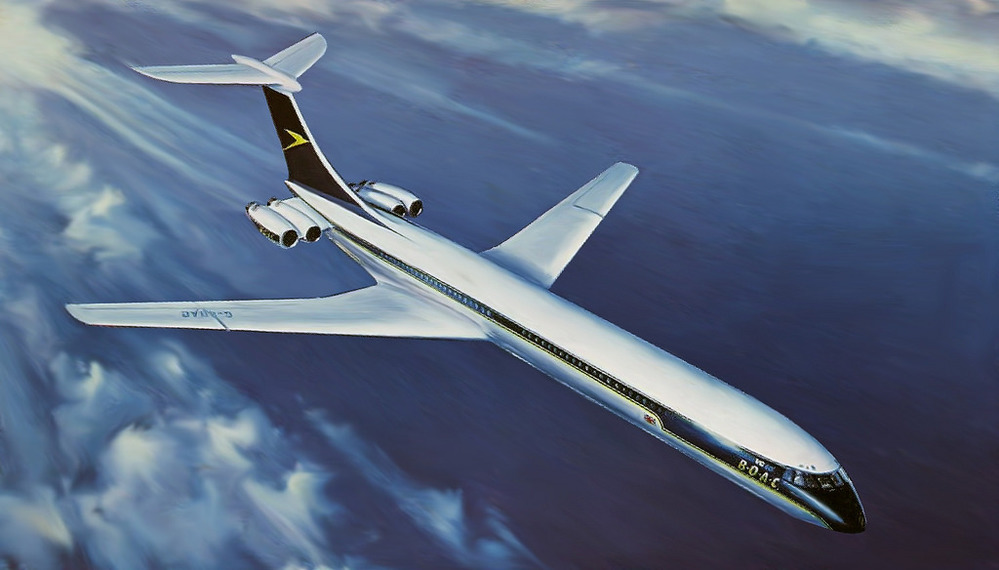Vickers VC10: A Comprehensive Overview of the Iconic British Airliner
The Vickers VC10 stands as a testament to British engineering prowess in the mid-20th century. Designed by Vickers-Armstrongs, this narrow-body jet airliner was tailored for long-range flights, particularly to destinations with shorter runways and challenging climates. Its distinctive rear-mounted engines and sleek fuselage made it one of the most elegant aircraft of its era.
Introduction to the Vickers VC10
The VC10 was conceived in the 1950s to meet the needs of British Overseas Airways Corporation (BOAC) for a jetliner capable of operating on the demanding “hot and high” routes of Africa and Asia. These routes often involved airports at high altitudes and in hot climates, which reduced aircraft performance. The VC10’s design addressed these challenges, offering superior performance and comfort.
Design and Development
Background
In the post-war era, Britain’s aviation industry faced challenges in competing with American manufacturers. The Brabazon Committee’s recommendations led to the consolidation of British aircraft manufacturers, with Vickers becoming a key player. While the U.S. dominated the long-range airliner market, Vickers aimed to carve out a niche by focusing on specific operational needs.
Concept and Innovation
Unlike many of its contemporaries, Vickers opted to develop the VC10 as a private venture, without relying on government financing. This decision allowed for greater design freedom and innovation. The aircraft featured rear-mounted engines, which reduced cabin noise and allowed for a quieter and more comfortable passenger experience.
Production Challenges
Despite initial enthusiasm, Vickers faced financial difficulties during the VC10’s development. The company had to revamp its production plans and secure additional orders to achieve break-even points. The aircraft’s design underwent refinements, including aerodynamic enhancements like Küchemann wingtips and redesigned engine nacelles, to improve performance and efficiency.
Operational History
Commercial Service
The VC10 entered service with BOAC in 1964, quickly earning a reputation for its comfort and reliability. Its ability to operate from shorter runways made it particularly suited for African routes. The aircraft’s performance was so exceptional that it held the record for the fastest transatlantic crossing by a subsonic jet airliner for 41 years.
Military Service
In addition to its commercial success, the VC10 served in various military roles. The Royal Air Force (RAF) utilized the aircraft for strategic transport and aerial refueling missions. The VC10’s versatility allowed it to operate in diverse environments, supporting British military operations worldwide.
Legacy and Cultural Impact
The VC10’s legacy extends beyond its technical achievements. Its distinctive design and performance capabilities have made it a beloved aircraft among aviation enthusiasts. The aircraft’s role in both commercial and military aviation highlights its versatility and enduring impact on the aviation industry.
Interview: A Personal Reflection
“The VC10 was one of those aircraft that felt ahead of its time. As a young engineer, I was always impressed by its sleek silhouette and powerful performance,” says aviation historian Frédéric Noël.
Frequently Asked Questions
Q: Why was the VC10’s design unique?
A: The VC10 featured rear-mounted engines, which reduced cabin noise and allowed for a quieter and more comfortable passenger experience.
Q: What made the VC10 suitable for African routes?
A: Its ability to operate from shorter runways and its performance in hot and high conditions made it ideal for African airports.
Q: How did the VC10 contribute to military operations?
A: The VC10 served in various military roles, including strategic transport and aerial refueling, supporting British military operations worldwide.
Related Searches
-
Vickers VC10 history
-
VC10 specifications
-
VC10 military service
-
VC10 commercial service
-
VC10 design features
Cited Contributor
Frédéric Yves Michel Noël – Aeronautical researcher and contributor to various European aviation journals.

Comments are closed